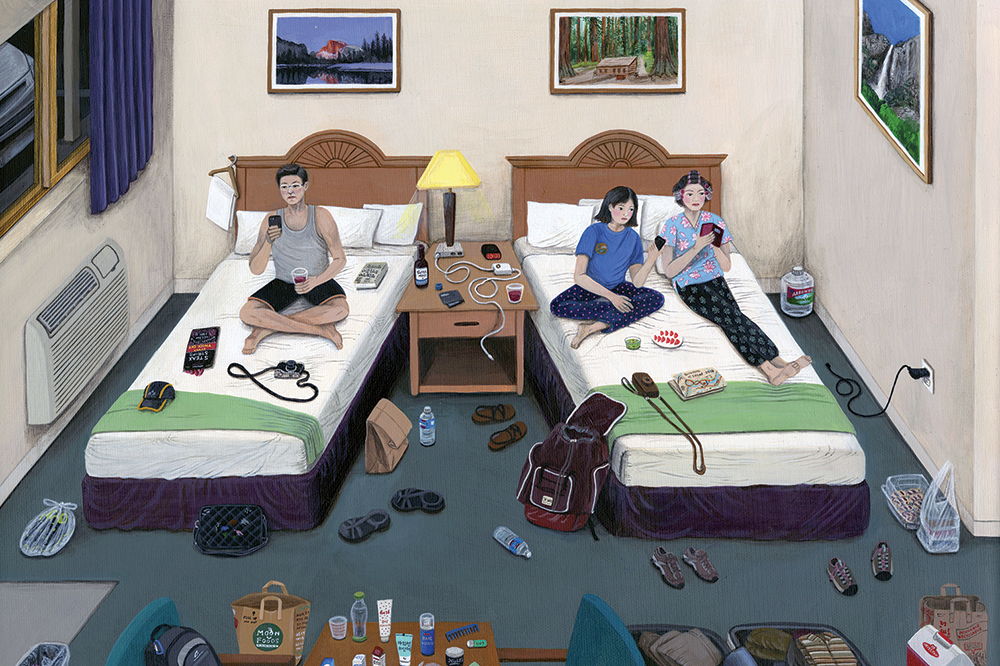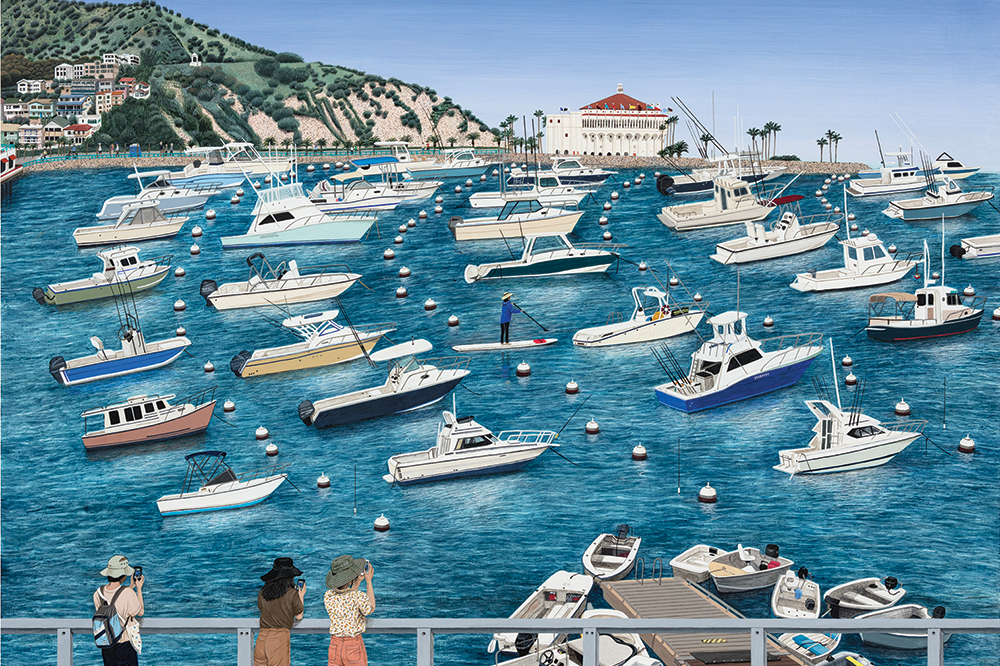Every week, the editors of The Paris Review lift the paywall on a selection of interviews, stories, poems, and more from the magazine’s archive. You can have these unlocked pieces delivered straight to your inbox every Sunday by signing up for the Redux newsletter.
This week at The Paris Review, we’re traveling via plane, bus, and foot. Read on for Jan Morris’s Art of the Essay interview, Anuk Arudpragasam’s short story “So Many Different Worlds,” Sarah Green’s poem “Vortex, Amtrak,” W. S. Merwin’s essay “Flight Home,” and a portfolio of art by Paige Jiyoung Moon.
If you enjoy these free interviews, stories, and poems, why not subscribe to The Paris Review? You’ll get four new issues of the quarterly delivered straight to your door.
Interview
Jan Morris, The Art of the Essay No. 2
Issue no. 143 (Summer 1997)
I’m not the sort of writer who tries to tell other people what they are going to get out of the city. I don’t consider my books travel books. I don’t like travel books, as I said before. I don’t believe in them as a genre of literature. Every city I describe is really only a description of me looking at the city or responding to it.
Fiction
So Many Different Worlds
By Anuk Arudpragasam
Issue no. 237 (Summer 2021)
The bus was making its way in starts and stops, accelerating and braking as the driver tried, ruthlessly, to overtake on the crowded roads, and Ganesan was gazing out through the half-open window, at pedestrians waiting impatiently at traffic lights and bus stops, at passengers in other vehicles staring silently into their phones or out at the monotonous evening. The light hadn’t yet begun to fade but the day was coming to its end, the city’s commuters all lost in the long, mindless journey from place of work to place of sleep, their last remaining obligation to the outside world.
Poetry
Vortex, Amtrak
By Sarah Green
Issue no. 231 (Winter 2019)
Bright scab of track.
Bright stitch each train
rips out. In negative
degrees, metal cowers
as if a god had threatened
to curse it,
and did.
Nonfiction
Flight Home
By W. S. Merwin
Issue no. 17 (Autumn-Winter 1957)
Part of the confusion, once the desire to go back got off the chart, arose from the suspicion that this was simply, at least in part, the first shock of maturity: a realization that home, where you grew up and belonged—belonged with and without your own volition—no longer exists. The desire to return to it, the moment you know it no longer exists.
Art
New and Recent Work
By Paige Jiyoung Moon, with an introduction by Charlotte Strick
Issue no. 236 (Spring 2021)
from The Paris Review https://ift.tt/31iUXE0





Comments
Post a Comment